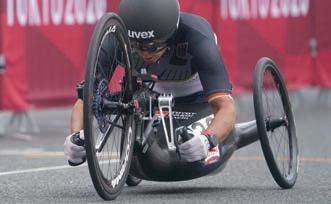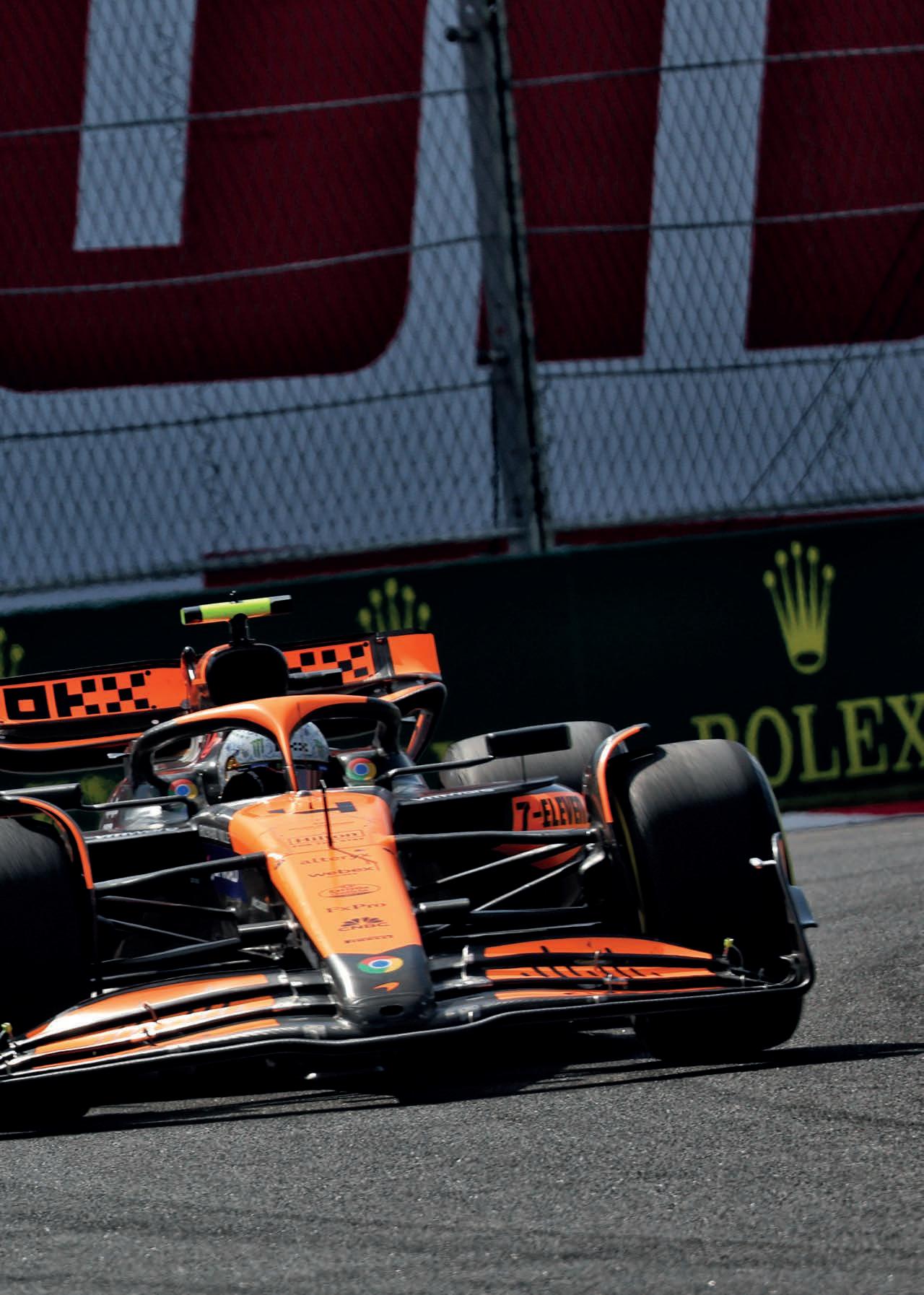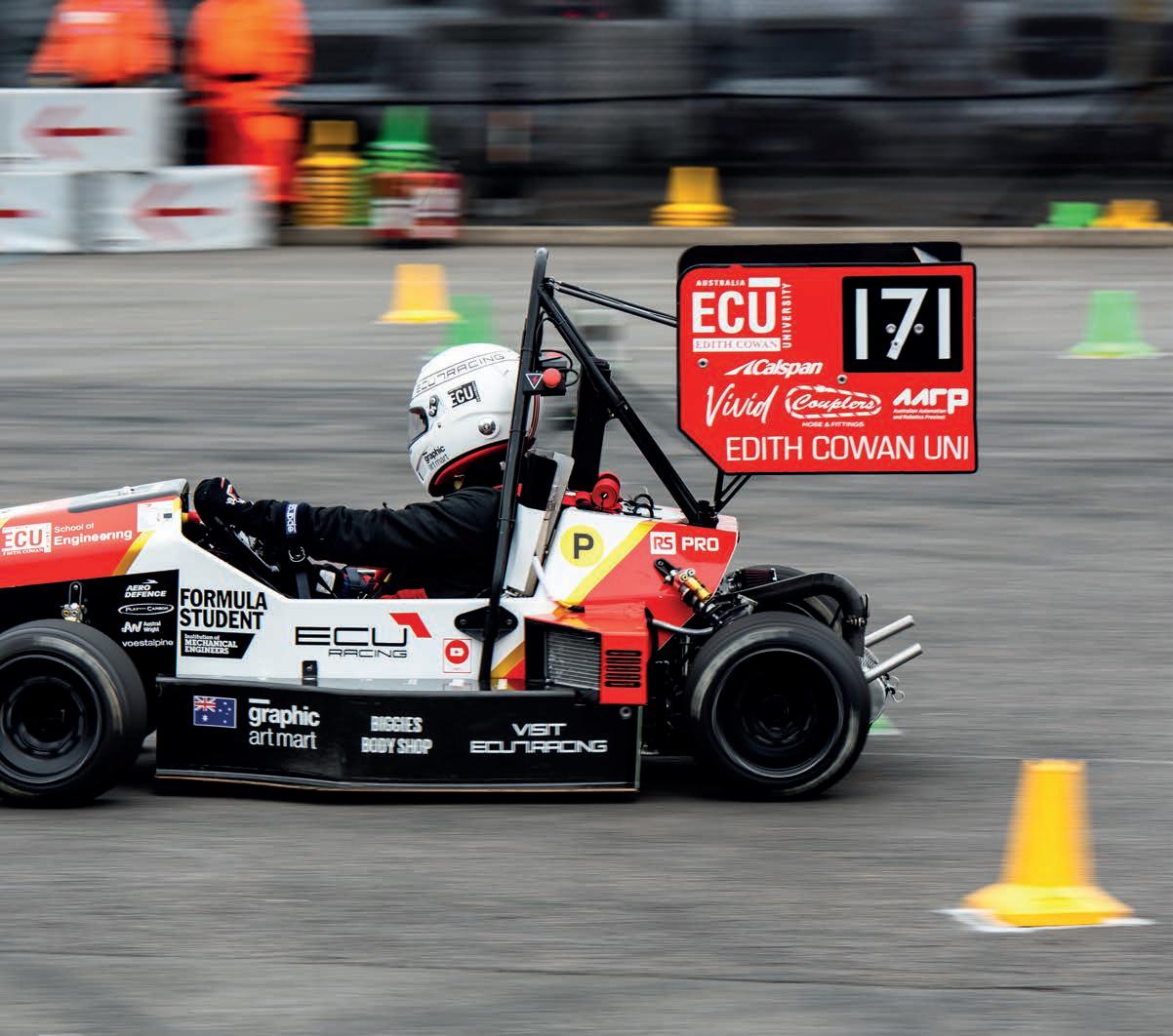






Formula 1 race winner now challenging for 2024 World Championship titles






Toyota racing technology transfers into parasports






Electric NASCAR



US series builds prototype EV for research and development










After breaking out from F1’s midfield last year, McLaren is starting to think about a title challenge as the current regulations mature
By DANIEL LLOYD
NASCAR engineers explain how Next Gen car enabled them to produce an electric prototype
By ERIC JACUZZI, BRANDON THOMAS, CHARLES TOBIN
At the beginning of 2022, NASCAR was poised to embark on one of the biggest changes to the sport in its eight-decade history – the introduction of the Next Gen platform.
Next Gen marked a paradigm shift to reduce costs, increase competition and make joining the sport more appealing to global OEMs. While most of the 38-race calendar of its debut season was dedicated to addressing normal teething issues, a number of fringe projects were simultaneously under way using the Next Gen architecture at NASCAR’s R&D Center in Concord, North Carolina.
One was the Garage 56 effort in partnership with Hendrick Motorsports that famously returned NASCAR to the 24 Hours of Le Mans last year. Almost in parallel, beginning in the summer of 2022, NASCAR and its OEM partners also agreed it was time to take a step into the battery electric vehicle (EV) arena. NASCAR’s design and aerodynamics groups worked alongside each other to develop not only a novel powertrain, but also a new body style to go with it.
The two major system design considerations for the prototype NASCAR EV were electric powertrain selection, and how to package it in the Next Gen platform. With performance and reliability uppermost in mind, NASCAR began the search for an experienced group in the electric vehicle space to partner with.
This venture did not last long before it was decided that STARD would be the supplier of the powertrain for the vehicle. The Austrianbased company’s track record for providing cutting-edge electric powertrain technology spoke for itself. For the past two years, it has partnered with Ford Performance on its SuperVan 4.2 and SuperTruck that competed at the Pikes Peak International Hill Climb. With the powertrain partner secured, the design of the vehicle itself could begin.
One of NASCAR’s key partners in developing the Next Gen platform, Dallara,
began the initial work of packaging the powertrain into the base car design. The first substantial obstacle the group encountered was the lack of space available for the rechargeable energy storage system (RESS).
Rather than undertake a complete chassis re-design toward a skateboard configuration, as would be optimal, it was decided to continue with the existing platform to reduce costs to all partners. The logical choice was to put the 1300lb (590kg), 78kWh RESS on the right side of the car, where it would occupy a large portion of the available space. Due to the existing design, it would also need to be installed from underneath the vehicle.
This being the first electric stock car, and knowing all too well the style of racing it would be subjected to, the RESS casing needed to be robust enough to withstand high-speed contact with a wall, and other cars. Consequently, the RESS sits at approximately elbow height to the driver, in a carbon casing that can withstand a 40g hit without penetration to the RESS pack cells.
To the casual spectator, opening the front or rear of this prototype would raise a few questions. Primarily, they would ask where the traditional, OEM-specific, pushrod V8 went, and what happened to the Xtrac sequential gearbox they’re used to hearing run through its gears at races every Sunday.
In the front of the car is a single STARD sixphase UHP motor and accompanying singlespeed gearbox, nestled in a modular front clip in the familiar Next Gen chassis.
Rather than undertake a complete chassis re-design… it was decided to continue with the existing [Next Gen] platform to reduce costs to all partners


NASCAR wants to showcase its sustainability efforts and building an EV prototype is one way of doing that. Discussions about the project between NASCAR and its OEM partners started in mid 2022
Edith Cowan University
By DANIEL LLOYD
The fact Edith Cowan University (ECU) transported its car from Australia to the UK by air freight shows just how seriously it took this year’s Formula Student contest at Silverstone. Not wanting to lose weeks of vehicle access to a time-consuming sea freight voyage, the Perth-based institution chose the more expensive, but much quicker, option of flying. The car arrived two weeks prior to the competition, giving enough time for customs checks and preparation by the team.
ECU last contested the British version of the inter-university racecar design competition in 2016. Its return came after winning Formula Student Australia with the WR-7, an internal combustion enginepowered car sporting wings for downforce and a unique rear suspension layout. Being able to then compete against electric and
hybrid-powered cars in the British event, rather than being in separate classes as the competition is in Australia, was one of the major draws for ECU to make the trip.
After four days of scrutineering, judging and dynamic trials at Silverstone, the Australian team won by 200.4 points, the biggest margin achieved in 21 years.
The 26th edition of Formula Student UK (FSUK) attracted 121 entries. A record 21 of those competed in the FS-AI competition for autonomous vehicles (see box out on p32). There were also 37 entries in the Concept Class, which did not involve any track running but was based on judged presentations and simulation.
Beyond that, the main competition between 63 teams comprised nine disciplines, four of which were static (scored by judges) and the rest dynamic (against the clock).




After four days of scrutineering, judging and dynamic trials… the Australian team won by 200.4 points, the biggest margin achieved in 21 years
Different powertrain types were permitted and encouraged, ensuring a breadth of engineering storylines across the paddock. As always, the hardest test to pass was scrutineering, which involves detailed checks to ensure car safety and compliance with the rules. After two days of technical inspections, only six had passed all scrutineering stages – tech, safety, chassis, tilt, noise and brakes –and were therefore qualified to take part in the dynamic events. Although 14 more cars subsequently passed scrutineering, the six teams fastest out of the blocks were expected to be overall victory contenders.
Superkarts can lap some tracks as fast as F3 but, with no suspension and unusual aerodynamics, they present a unique engineering challenge
By MIKE BRESLIN

Some years ago, Patrick Depailler, the rather wild but very quick Formula 1 driver, tried a superkart out for size. After a few laps he pitted and declared he could ‘put one of these on pole at the Monaco Grand Prix.’ Or words to that effect, in French.
Whether or not that was true is up for discussion over a beer, but what’s not in doubt is that these spectacular little machines are very fast indeed.
How fast? These days, 0 to 60mph is around 2.3 seconds for the top class, while they can hit speeds of close to 145mph on some circuits. However, it’s on the tight and twisty tracks they really come into their own. Places such as Cadwell Park in the UK, where a superkart holds the outright lap record.
‘It depends on the length of the straights, as the lap time does come from the corner speed,’ says Ian Rushforth of the British Superkart Racing Club (BSRC). ‘But I would say we’re very rarely at a race meeting where we aren’t the quickest on the day.’
Yet it may well be this impressive performance that’s held this category back, in a way. For, while it was hugely popular in the late 1970s and early ’80s, it has since dropped off the radar a little bit, and some believe this might be because these machines make many other racecars look a bit, well, slow. Consequently, it’s sometimes difficult for British Superkarts – as the UK series is called – to find slots at regular car meetings.
It’s debatable whether the on-track performance is the only reason for this,
but it is interesting to note that this year’s British Superkart Grand Prix was held at a motorcycle event – though the series does usually race at car meetings.
Superkarts is still relatively healthy in the UK, though, and while entry levels for this year’s Grand Prix were nowhere near the category’s heyday (there were 362 entries across all classes in 1985!) it is still at a decent level, with 59 listed for the Donington Park event. This, too, was across all the classes, however they now race as one grid.
That’s a very big grid, but then there’s a lot of room for karts on a regular race circuit. This use of long tracks does mean it can be difficult to figure out just what is

a superkart, though Rushforth is very firm on this point: ‘Just don’t call it a go-kart.’
He has a point, for these machines are very different from fun karts and even top-level, short-circuit karts. For a start, they have longer wheelbases, use gearboxes and aerodynamic packages, making them more like racecars than regular karts, and the level of engineering reflects this.
Superkart regulations are relatively open and, while Anderson Racing Karts make up the bulk of the current field in British Superkarts, other manufacturers are involved. There is also room for technical ingenuity, as Russell Anderson, boss of Anderson Racing Karts, explains: ‘It’s the development I like.
We manufacture everything on it, and I like to be in control of our own destiny. So, if we need a part, we’re going to make it.’
The amount of engineering freedom depends very much on the class, of which there are four, including 250 Mono (singlecylinder 250cc engines), 450 National (450cc four-stroke motocross engines) and 125 open (highly modified 125cc engines). The quickest and most popular class in terms of entrants, though, is Division 1, so we will concentrate on that here.
‘Division 1 is the fastest,’ confirms Rushforth of the 250cc, twin-cylinder, two-stroke class. ‘The engines are 100bhp [with a minimum weight of 218kg, including driver] and they do 140mph and more. It is a common formula across
Superkarts use six-speed gearboxes, have very effective aero and are among the fastest vehicles to lap UK circuits. The works Anderson is pictured here
the world, but we’ve probably got the most competitors here in the UK.’
One of the defining elements of any kart is a lack of suspension, but this doesn’t mean there is no adjustability.
‘Altering the caster and the camber makes a massive difference,’ says Steve Parker of superkart team, Parker Motorsport. ‘Then you can alter the width and the track, front and rear, though once they’re set, they don’t usually change too much.’ Toe can also be adjusted.
With no suspension, and very little deflection in the walls of the tiny tyres, there has to be a certain amount of ‘give’ somewhere, and this tends to be in the kart’s frame.
By TOMMY PARRY
Before Richard Hilleman established himself as a big name in the computer gaming industry, as coproducer of the renowned Madden American football series, he was a motorsport fanatic. His obsession with all forms of motorsport, and its emphasis on cuttingedge technology, dovetailed nicely with his ambitions as a gaming pioneer.
After releasing nearly 40 titles in the mid1980s, Hilleman helped expand the then tiny sphere of racing games as producer of 1989’s
Indianapolis 500: The Simulation, hailed as the first to move the racing video game away from the arcade and towards the budding world of realism. Some 15 years later, he made his first foray into real-life motorsport by electrifying a CRG go-kart with a motor from an electric motorcycle. Putting this new powertrain in a lightweight, proven package felt better than doing something more complex that could bring teething problems.
‘It seemed wise to try and infiltrate electric motorsports from the bottom up,’ he says.
Hilleman saw an opportunity to make his first foray into reallife motorsport by electrifying a CRG go-kart with a motor from an electric motorcycle
The new motor from Zero Motorcycles provided 115Nm of torque, enough to propel the 136kg motorcycle it normally powered to a maximum speed of 131km/h (81mph).
The prospect of putting the same lump in a streamlined kart weighing just 200kg, with driver, was motivating, to say the least, and preliminary testing would demonstrate that the on-demand torque available from an electric powerplant would outrun some of the fastest petrol-powered karts around, which all weighed considerably less.
